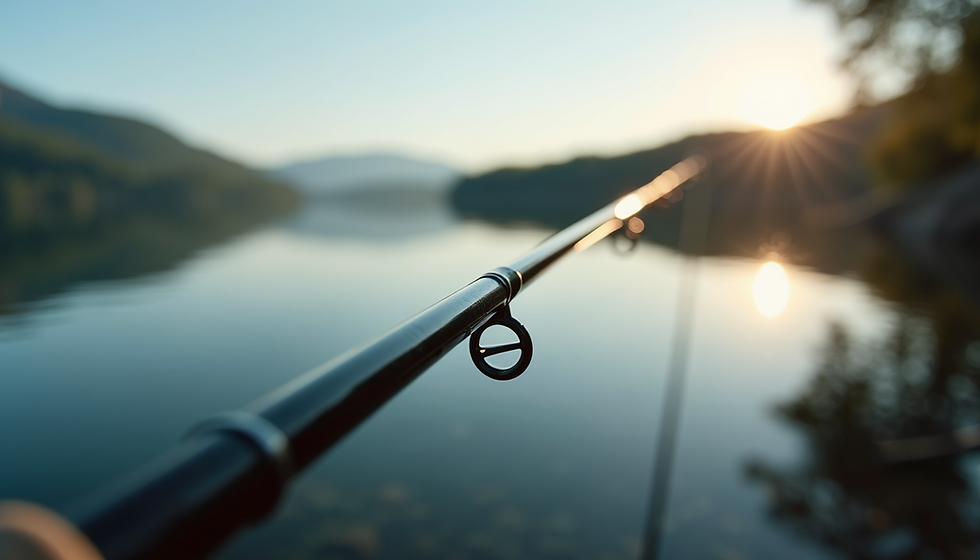Unlocking the Hidden Power of Knots: Transform Your Fishing Game Forever
- Flying Fishman

- Apr 25
- 4 min read
Fishing is more than just casting a line into the water and waiting. It's an intricate blend of skill, practice, and smart techniques. One essential yet often overlooked aspect of fishing is the art of tying knots. Perfecting your knot-tying skills can enhance your fishing success rate significantly. In this post, we will dive into the critical role knots play in fishing, discuss essential types of knots you should master, and illustrate how these knots can lead to a more fruitful catch.
The Importance of Knots in Fishing
Knots create the vital connection between your fishing line and your lure or hook. A well-tied knot is like a sturdy bridge; it provides security and stability, ensuring that when you hook a big fish, it won't escape. For instance, studies show that up to 70% of lost fish can be traced back to poorly tied knots. On the flip side, a knot that is tied with care can withstand greater pressure, meaning you are more likely to reel in your catch, rather than watching it swim away.
Each fishing scenario has its own challenges. Choosing the appropriate knot can dramatically influence your effectiveness and enjoyment on the water.
Types of Fishing Knots You Should Know
Every angler should be familiar with a few essential knots. Here are some key types:
1. Improved Clinch Knot
The Improved Clinch Knot is among the most popular knots due to its ease of tying and reliability. It’s a strong choice for attaching the fishing line to hooks or lures. Anglers appreciate that it retains about 90% of the line's original strength, making it a dependable option for both beginners and seasoned pros.
2. Palomar Knot
Renowned for its strength, the Palomar Knot excels when tying braided lines. It’s a go-to for targeting larger fish species, as it can handle heavy loads without slipping. Research indicates this knot can double your chances of landing big fish compared to lesser knots.
3. Loop Knot
The Loop Knot is ideal when you want your lure to move freely, mimicking the natural behavior of prey. Anglers using this knot have reported up to a 40% increase in strikes when fishing with topwater lures thanks to their realistic movement.
4. Bimini Twist
The Bimini Twist is an advanced knot that produces a double line, enhancing strength and shock resistance, which is essential in offshore fishing. This knot is known to sustain high-pressure environments, making it vital for battling large game fish, where line breaking is a real concern.
5. No-Snag Sinkers Knot
If you enjoy bottom fishing, the No-Snag Sinkers Knot will help keep your tackle intact. It allows the sinker to slip free if it becomes lodged on debris. Such a knot can prevent you from losing significant amounts of tackle; anglers have saved around 25% more tackle on average by using this knot in snag-prone waters.

How Weak Knots Can Ruin a Good Day Fishing
Picture this: you've spent hours waiting, and finally, you hook a fish, only to have it break free because of a lousy knot. This scenario is more common than you might think. Weak knots often fail under pressure, particularly when dealing with larger species. To avoid such heartbreak, regularly practice tying your knots. Ensuring they are secure can keep your focus on what really matters—the thrill of catching fish.
The Role of Knot Choice in Different Fishing Scenarios
Different fishing environments present unique challenges, and your knot choice can be pivotal.
Freshwater Fishing
In freshwater fishing, where lighter equipment is typical, knots like the Improved Clinch Knot or Palomar Knot are perfect for providing needed security without being overly bulky. A well-chosen knot enhances stealth, which can significantly improve your chances of success.
Saltwater Fishing
Saltwater fishing typically involves heavier line and larger species. Here, the Bimini Twist and Palomar Knot are ideal for their durability. In challenging marine environments, these knots hold up against fierce fish and rough conditions, reducing the likelihood of losing your catch due to line failure.
Practice Makes Perfect
To master fishing knots, practice is essential. Spend time at home tying knots using various lines and tackles. This experience helps you understand how each knot behaves in different situations. Keep a knot-tying reference guide in your tackle box to help yourself and fellow anglers when needed.
The Psychological Edge of Mastering Fishing Knots
Mastering knots not only impacts your practical success but also boosts your confidence as an angler. Knowing you’ve tied your knots securely reduces anxiety and enhances concentration on your technique and the experience of fishing. Confidence can lead to better performance. Ultimately, it creates a more fulfilling experience out on the water.

Summing It Up
Mastering knot-tying greatly improves your fishing effectiveness and overall experience. By understanding the various knots available and practicing them, you can avoid lost fish and increased frustration. Rather than letting weak knots sabotage your fishing adventures, take the time to learn this crucial skill. Recognize that the knot is at the heart of your connection while fishing. Tie it securely and get ready to reel in those big catches! Whether you're just starting out or have years of experience, the right knots can transform your fishing game for the better.



